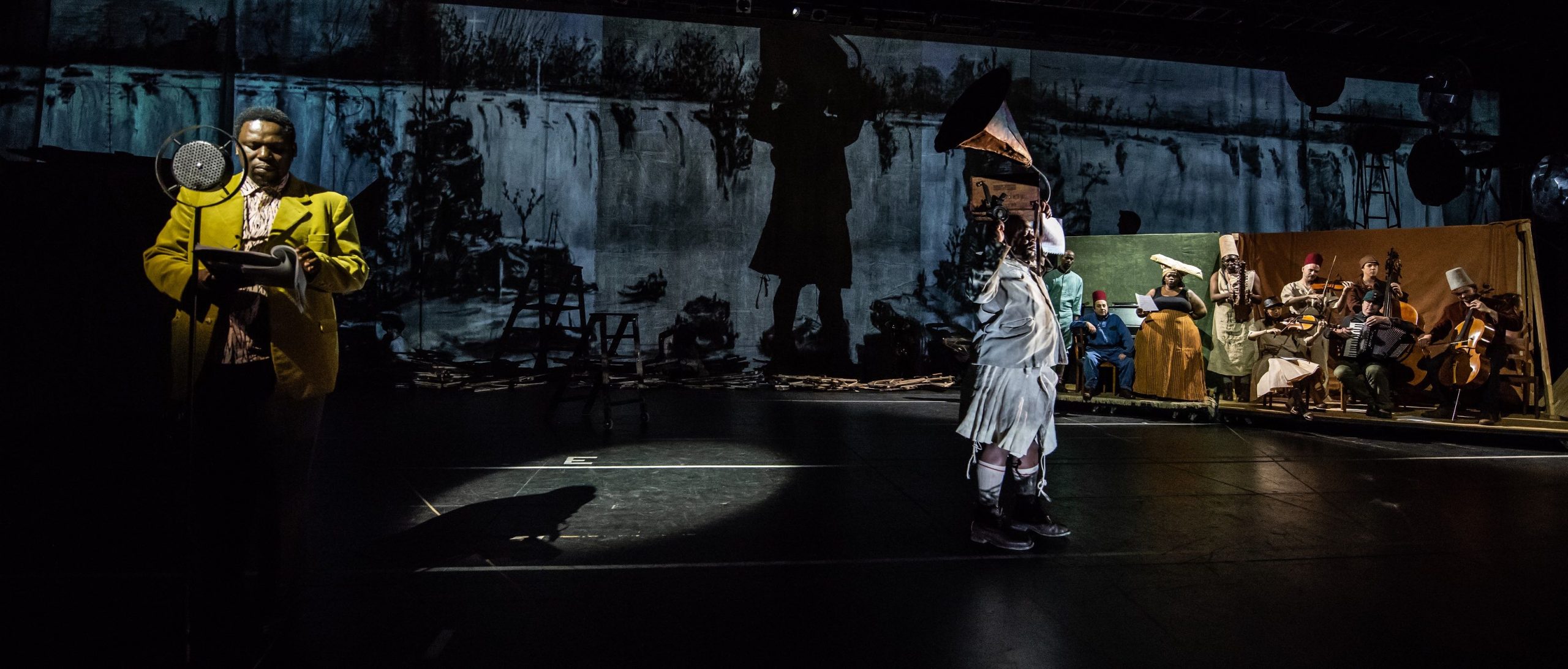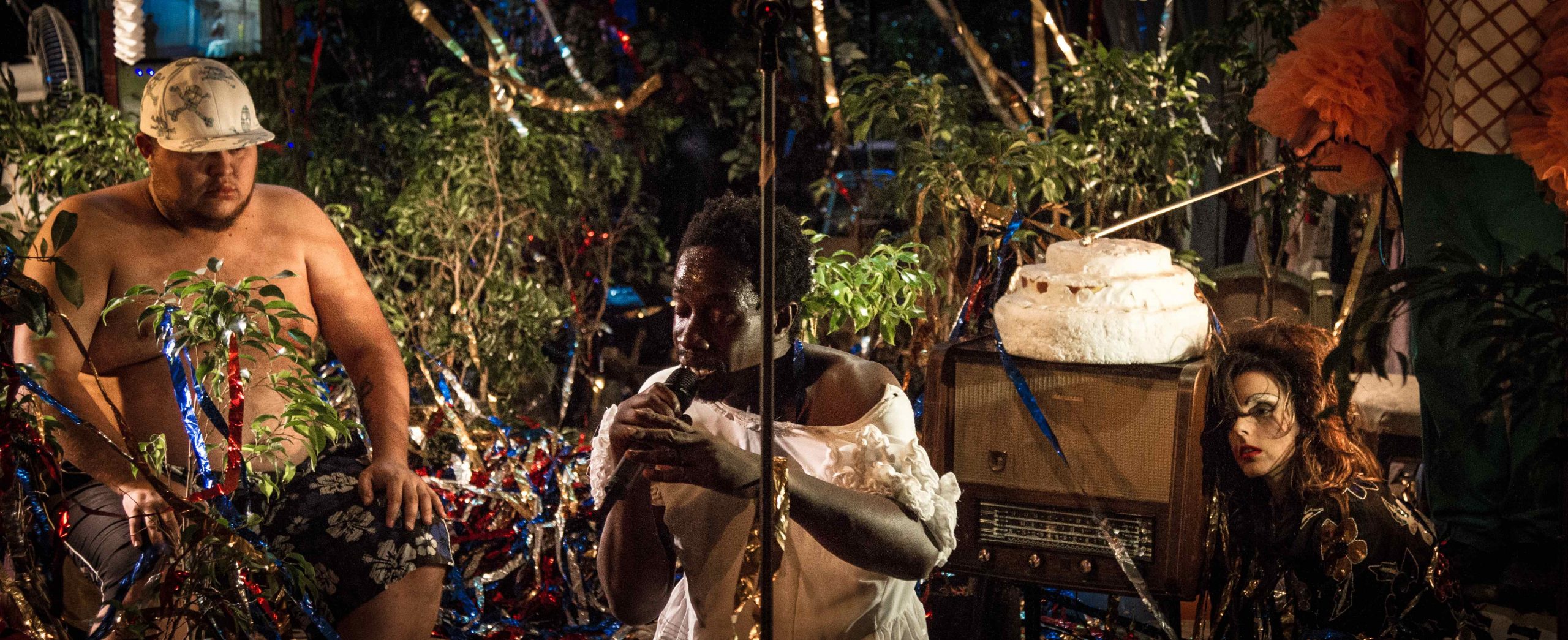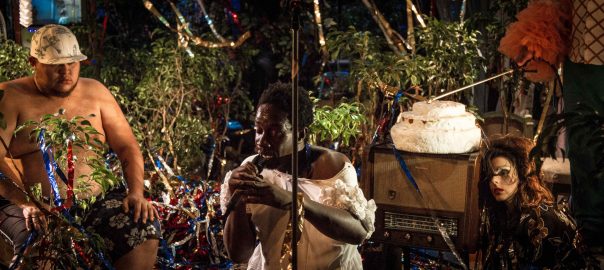The 72nd edition of the Holland Festival, the largest international festival of performing arts in the Netherlands, has again sensed the spirit of the age. News & Noise attended two fantastic artworks that are exemplary: The Head & The Load of William Kentridge – about the history of Africans in the First World War, and Los Incontados: un tríptico of Mapa Teatro – about the civil war in Colombia.
by Charlie Crooijmans
Amsterdam – Every year in June you’ll see the colorful banners and flags of the festival waver. From May 29 – June 23, the Holland Festival (HF) takes place in various venues all over Amsterdam. The versatile program contains dance, theater, music theater, concerts, movies, exhibitions, interdisciplinary – and multi-medial events. The HF was founded in 1947, two years after the Second World War, to stimulate international exchange and cooperation.

This year the HF chose to work with two associate artists: South-African visual artist and stage director William Kentridge (1955), and the Congolese choreographer Faustin Linyekula (1974). Their work was not only staged at the festival, they also curated work from other artists. Both Kentridge and Linyekula spend around three months in Amsterdam to work and feel the city. Is the Dutch society as tolerant as it claims to be? How about the inclusiveness and multiculturalism?
These are the times that the (western) world reflects on discriminatory manifestations. Museums are displaying colonialism, the abolition of slavery is being commemorated, street names of heroes of colonialism are being questioned, and initiatives like the Black Heritage Tour (also part of the HF) came into existence. With the two associate artists from Africa, the HF takes a step further in the right direction. Slowly, slowly our current society will get awareness of what our black fellowmen had to endure, and still endures.
The HF is mostly considered as avant-garde and elitist. However, it is accessible for every one who is interested in culture, also for the ones with a low income. Take for example the free of charge ‘Opera in the Park’, and this years Parlement debout, a theatrical parade through the mainly black neighborhood Amsterdam-Zuidoost, curated by Linyekula. The publicity around the HF is not the problem. But maybe the elitist image could be a barrier. It would be so great if every one can enjoy and learn from a performance like The Head & The Load.
Especially now! There are so many commemorations, like the 75th anniversary of D-day at the end of WW2. The British movie They Shall Not Grow Old (2018, Peter Jackson) with astonishing footage, commemorates the centennial end of WW1. But the story of the African people during WW1 is largely unknown. Thanks to Kentridge’s The Head & The Load we not only got to know what happened, we also could feel the pain.
The Head & The Load was the opening performance of the HF, in presence of the Dutch royal couple. At one point this was, in spite of the fact that the Netherlands were neutral in WW1, a painful confrontation. The play is about the nearly two million African ‘soldiers’ (in fact porters and carriers) used by the British, French, and Germans during the WW1 in Africa. They had to support the colonial power, the kingdoms in Europe. The hymn God Save The King initiated by singer Grace Magubane, was transformed by a choir into an intens, contrapuntal poem. A penny for the thoughts of the Dutch king…
It was amazing how the team of Kentridge and his mainly black cast used all the elements of theater in an almost dadaist way: art, dance, music, chant, spoken word, shouts, silence, visuals (drawings, film projections), costumes, props, shadow play, and poetry. At first your reporter was afraid that the overload of sound of vision would get in the way to comprehend the story. But it all came together. Because of the sometimes shocking images and the repetition of the shadows of the carriers on the 50-meter wide stage, it was easy to grasp the enormousness of what happened in far-away Africa. How the black people were treated, and how worthless their lives were. Especially felt when the thousands of names were shown on the screen.
Another impressive play at the HF was the Colombian Los Incontados: un tríptico. This performance is a short version of Anatomía de la violencia trilogy, a production of Mapa Teatro. This theater company from Colombia was founded in 1984 by Heidi and Rolf Abderhalden in Paris. In France they studied theater and visual art forms with, among others, William Kentridge. Back in Colombia, Mapa Teatro became a laboratory of experiments. In recent years they focus on the absurd reality of everyday life in Colombia.

Los Incontados: un tríptico is about the uncountable (hence the title) missing persons and victims during the civil war (1964 – 2016), caused by guerrilla groups, paramilitary groups and drug cartels. The phrase “the carnival must end, in order for the revolution to begin” resonates throughout the piece. In the first part you see a little girl in a living room conducting a brass band. They vanish one by one, diminishing the expectations of the revolution. A stronger image of that phase is the glitter party of men dressed as women destroying balloons, while the little girl is watching. The portrait of Che Guevara doesn’t help the revolution either. The mix of visuals, personages, radio, and music is intriguing. The subtitles (with or without voice over) are sometimes hard to follow.
The HF has come to an end. Hopefully the unseen and untold stories of the world continues to be a common thread in the following editions of the HF.
In Amsterdam you are able to go the Eye Filmmuseum, where William Kentridge exhibits 10 Drawings for Projection (1989-2011) that illuminate the history of South Africa, till September 1, 2019.
